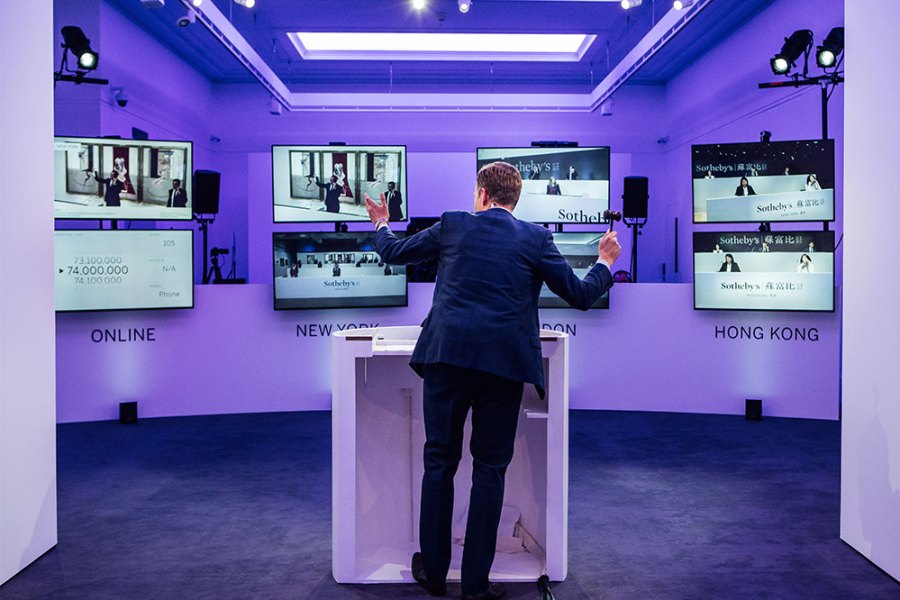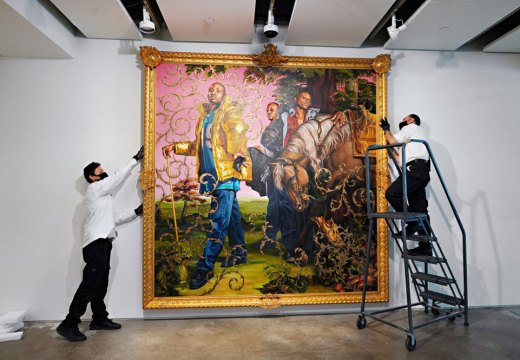Crystal balls are more than usually occluded this year, but one thing looks certain: the art market, like many other businesses, will not be returning to its pre-pandemic form – even when it becomes feasible for it to do so. Too much has been learned, as well as lost.
One of the few heartening aspects of this annus horribilis has been marvelling at the resourcefulness, ingenuity and sheer hard graft of those in a financial position to make something, anything, happen. Necessity being the mother of invention, we have seen the widely ignored online auction morph into increasingly polished livestreamed and multi-venue hybrid events. We have sat in the comfort of our own homes to view pared-down, virtual versions of the world’s biggest art fairs. Both have given us the opportunity to live-chat with staff and also, thanks to technical wizardry, see what their offerings might look like on our own walls. Most crucially, we have seen how easy it has been to break with tradition – in terms of the global auction calendar, its classic sales categories, and how and where art might be sold.
In response to client demand, for example, auctions were brought forward to mitigate any potential fallout of the US presidential election. Dealers staged pop-up shows in the Hamptons, Palm Beach, and other second-home haunts of their clients – and, like them, stayed put. Auction houses similarly opened resort gallery spaces, and announced record years for private sales in general. This agility of response to clients’ needs is unlikely to be relinquished in favour of the old scheduling straitjackets. While the art market has always followed the money, now the money – the super-wealthy collector – is increasingly likely to call the shots.
During these long months of lockdown, auction houses and dealers have learned that buyers, or at least some of them, are prepared to pay surprisingly large sums for works of art sight unseen. They have also discovered that they can operate with online-only catalogues and fewer staff. Those businesses that do survive this year are likely to remain leaner, and meaner to their largely already over-stretched and underpaid workforce. Yet it would be naive to imagine that the resulting loss of expertise will not have consequences for both the companies themselves and for the wider art market. Already, a reliance on online platforms has favoured the kind of art that does not necessarily have to be seen and the kind of buyer who is exceedingly well informed – or conversely those sellers whose clients have not got a clue. The major casualties will fall among those offering art by emerging artists or older works, where issues of condition are key. The art market that limps out of the pandemic is likely to be even more lopsided than before.
A not unrelated phenomenon of this period has been the rise of the regional auction house – those salerooms in cities outside of the traditionally dominant marketplaces of New York, London, Hong Kong and Paris (an order likely to change after Brexit). A number of highly successful sales demonstrated that consignors need not rely on the usual duopoly of Sotheby’s and Christie’s. These small operations are winning serious business in competition against their larger rivals, and not least because of the exorbitant selling costs of the latter. Sotheby’s and Christie’s are in danger of pricing themselves out of whole sections of the market, but perhaps they aim to become boutique operations like Phillips.
Their livestreamed auctions did, however, reveal perhaps the most bizarre phenomenon of the year: that many millions of people, a large proportion of them in Asia, were tuning in to watch other people spend unimaginable sums on works of art. Perhaps it was simply a novel spectator sport at a time when not much else was happening, but this engagement of the young and aspirational will have long-term consequences for the art market. Already, Asian clients are responsible for around 30 per cent of global auction sales and a significant proportion of top lots. Regional market autonomy is in sight.
Novelty was certainly a big driver in the limited art commerce of this year but novelty for its own sake inevitably palls, and sure enough it did not take long for most of us to weary of interminable auctions or start succumbing to square-eyed fatigue from the saturation of online fairs. As social creatures, we long for the return of the human contact that accompanies our adventures around the art world, and as adaptive, problem-solving creatures, there will be those among us who will continue to innovate where they see gaps in the market. Above all, those who are not speculators long to return to looking at works of art and finding new treasures to take home. What this particular crystal-gazer hopes to discern is the flourishing of local rather than global initiatives to open up the marketplace for all kinds of artworks at every price.
Unlimited access from just $16 every 3 months
Subscribe to get unlimited and exclusive access to the top art stories, interviews and exhibition reviews.














![Masterpiece [Re]discovery 2022. Photo: Ben Fisher Photography, courtesy of Masterpiece London](http://www.apollo-magazine.com/wp-content/uploads/2022/07/MPL2022_4263.jpg)
It’s time for the government of London to return to its rightful home